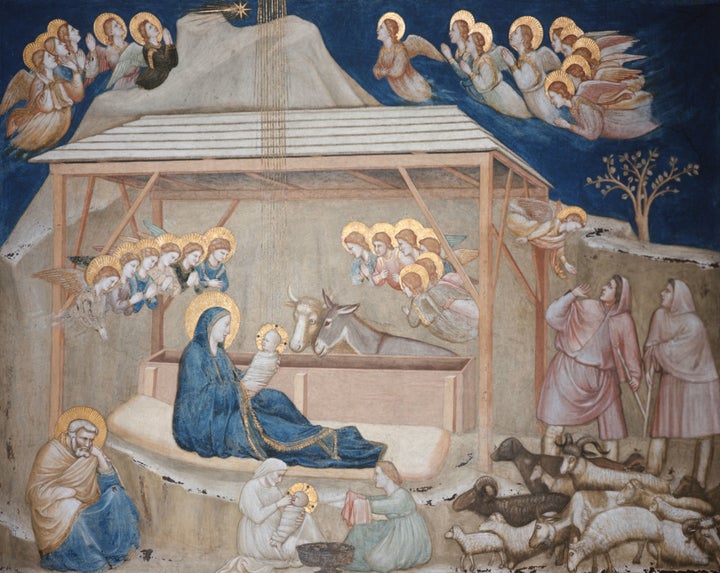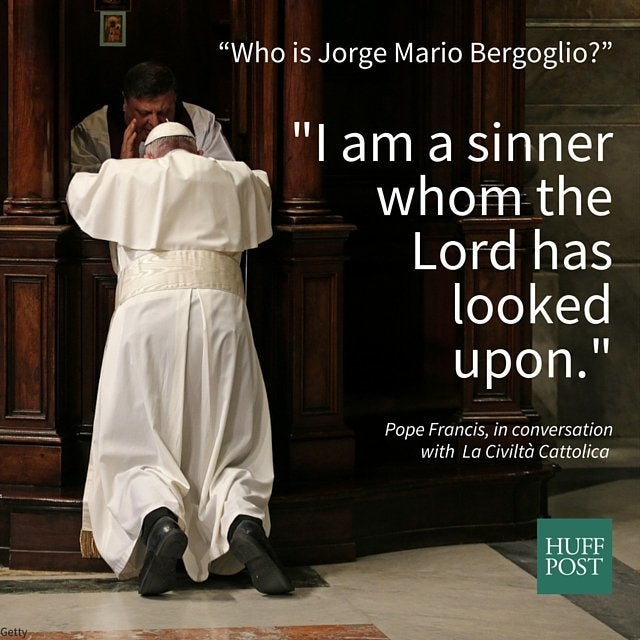Every year, Pope Francis digs into the Catholic church’s centuries-old treasure trove of religious art and chooses an image for the front of his Christmas card.
For Christmas 2016, Francis has chosen a scene from a fourteenth-century fresco painted by the artist Giotto di Bondone inside a church in Assisi, Italy.
The image has all the usual hallmarks of a modern-day nativity scene ― shepherds, angels, animals, and the Virgin Mary. But take a closer look and you’ll realize that there’s something a little odd about this Christmas tableau.
There are two baby Jesuses ― one held by Mary and another held by a midwife sitting underneath her.

According to the National Catholic Register, this 1313 fresco unique in that it uses two little children to represent Jesus, whom Christians believe is the son of God. The Catholic site reports that Giotto painted Jesus twice to illustrate two sides of his nature ― the human and the divine.
The two midwives at Mary’s feet are embracing and supporting one of the babies. A representative for the church’s convent, Enzo Fortunato, said in a statement that this emphasizes the idea that Jesus is not a stranger to the world, but “part of the humanity to which we belong,” according to an NCR translation.
Both babies are wrapped tightly in swaddling clothes, which Fortunato said recalls the need to “alleviate the suffering of others.”
It’s also significant that the fresco is located at Assisi, the same town where the pope’s namesake, Saint Francis of Assisi, was born. Fortunato told Ansa that Pope Francis chose the painting from Assisi because “St. Francis was the one who invented the Nativity scene.”
In fact, according to an early biography, St. Francis of Assisi staged the very first nativity scene in 1223, as a way to share the message of Christmas with his neighbors. Catholic worship services were only said in Latin during that time, which most laypeople didn’t understand. So St. Francis set up a manger with hay and live animals, and invited people to come take a look while he shared the story of Jesus’ birth.
Fortunata suggested that the nativity practice started by St. Francis was part of the saint’s vision to reach all levels of society ― the rich and poor, literate and illiterate.
In the end, Giotto’s Nativity isn’t a surprising art choice for Pope Francis ― a leader who has made it his mission to find ways to reach out to the margins of his church.

